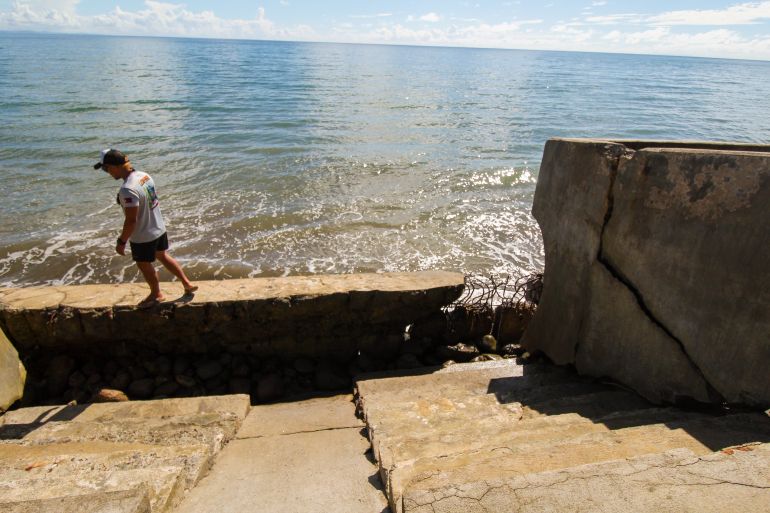
Haiyan was one of the strongest typhoons ever to make landfall. More than 6,300 people were killed as the storm swept across the island of Leyte, flattening homes and causing a storm surge that swamped entire neighbourhoods. The government said at least 13 million people were affected.
Leyte was struck again by a typhoon in December 2021. Typhoon Rai rivalled Haiyan’s intensity.
About 20 typhoons a year enter Philippine territory. For the last 12 years, the Southeast Asian archipelago has kept the top spot for the most vulnerable and at-risk country for natural disasters in the World Risk Index produced by Germany’s Ruhr University Bochum.
The Philippines is home to 46 of the world’s 70 species of mangrove trees and shrubs, which thrive in the tidal saltwater shallows where the land meets the sea.
Four villages in Silago were among the first to start, working with NGOs and village officials to begin planting a year after the disaster. The characteristic bulbous roots and flat leaves of the varying types of mangrove now line 215sq km (83 sq miles) of the town’s coastal area.
The Leyte Center for Development (LCDE), a humanitarian organisation which supported the planting in Silago, believes the plants helped save 2,000 coastal residents from Rai’s onslaught.
There has been little support from any officials at the municipal level or above, however.
The government has instead backed man-made interventions including a vast concrete sea wall in Tacloban City, Leyte’s capital.
Construction on the 16.9 billion Philippine peso ($304.5m) Storm Surge Protection Project (SSPP) began in 2016.
The 44.48km (27.6 miles) long concrete seawall was supposed to have been finished by 2020 but only 58 percent of the work has been done.
Delays have been caused by “Right-Of-Way Acquisitions, fluctuating prices of materials [and] request of additional features in the tide embankment”, the Department of Public Works and Highways (DPWH) regional office told Al Jazeera in an email.
Along some sections of the SSPP, the wall has already started to crack and crumble, exposing the steel rebars inside to the elements.
But the DPWH is standing by the project. In a report it shared with Al Jazeera, it advised engineering offices on the island “to adopt the SSPP standards in protecting their shores all over the region”.
Professor William Holden, an environmental geographer from the University of Calgary who is studying the situation in Tacloban, says that even when the wall is finished, it will probably not be enough to protect the city.
“Climate change means warmer air holding more water and thus heavier rainfall events. So there’s no way engineers can predict how big of a seawall to build. Future typhoons will eventually dwarf Haiyan,” said Holden, who suspects the maintenance of the SSPP will also prove costly.
The government, however, continues to expand its engineering interventions in Leyte.
That entails bulldozing the mangroves along Cancabato Bay, classified as a protected area by the city for its biodiversity. The bay is a popular fishing ground and its mangrove density was increased by the local fishing community after Haiyan.